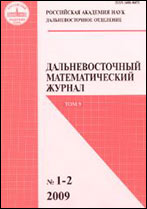|
Using 2D/3D convolutional neural networks and direct numerical modeling for transcranial ultrasound problems
A. V. Vasyukov, A. S. Stankevich, K. A. Beklemysheva, I. B. Petrov
Moscow Institute of Physics and Technology (National Research University), Dolgoprudny, Moscow Region
Abstract:
The paper considers the problems of modeling diagnostic medical ultrasound in relation to the study of cerebral vessels through the skull wall. The bone tissue of the skull wall distorts the wave fronts, creating artifacts and aberrations in the image. The report presents mathematical models and numerical methods for solving a direct problem - calculating a numerical ultrasound image (B-scan). The models and methods cover an acoustically homogeneous medium, reflecting boundaries between different tissues, individual bright point reflectors. The report also presents the results of solving the inverse problem - restoring the real configuration of the media under investigation based on ultrasonic data. 2D and 3D convolutional neural networks are used for the inverse problem.
Key words:
ultrasound, numerical modeling, inverse problem, convolutional neural networks.
Received: 02.10.2022
Citation:
A. V. Vasyukov, A. S. Stankevich, K. A. Beklemysheva, I. B. Petrov, “Using 2D/3D convolutional neural networks and direct numerical modeling for transcranial ultrasound problems”, Dal'nevost. Mat. Zh., 22:2 (2022), 255–256
Linking options:
https://www.mathnet.ru/eng/dvmg498 https://www.mathnet.ru/eng/dvmg/v22/i2/p255
|

| Statistics & downloads: |
| Abstract page: | 92 | | Full-text PDF : | 30 |
|




 Contact us:
Contact us: Terms of Use
Terms of Use
 Registration to the website
Registration to the website Logotypes
Logotypes








 Citation in format
Citation in format 